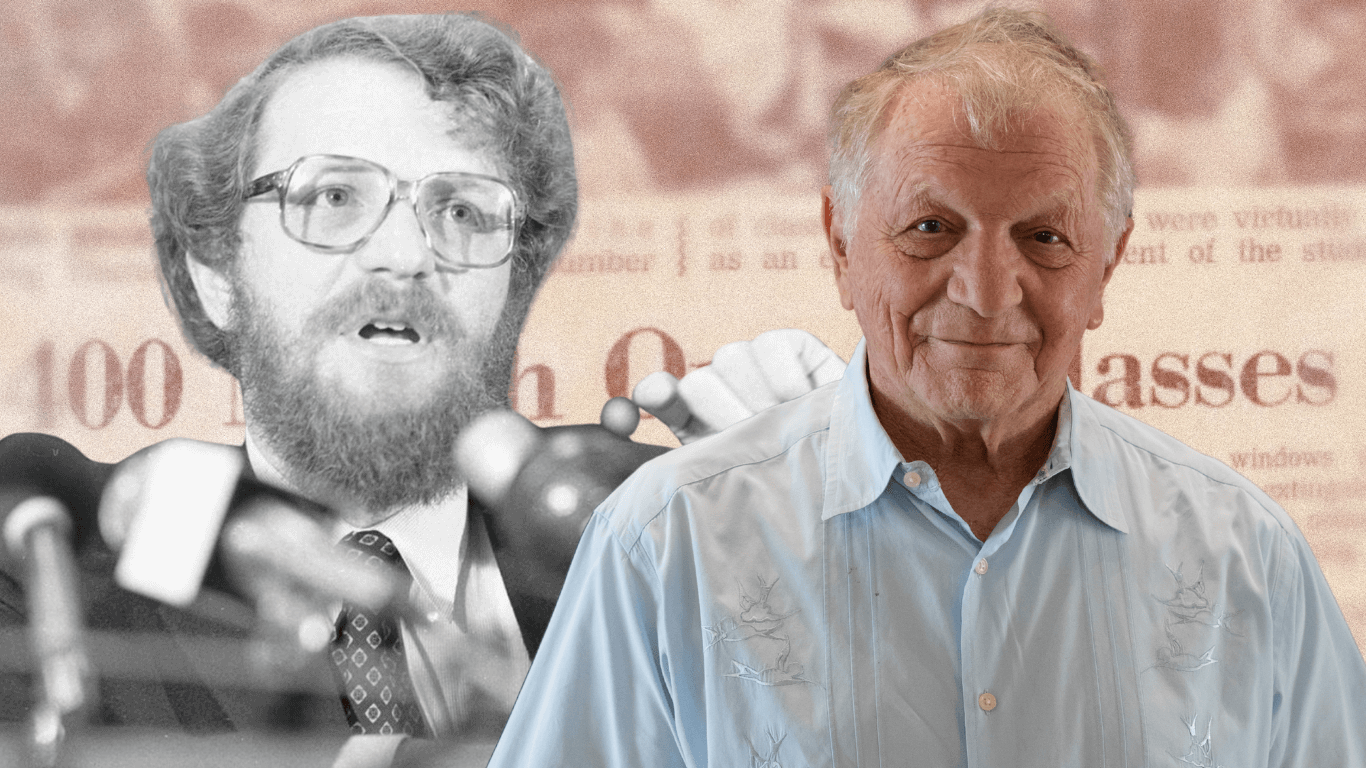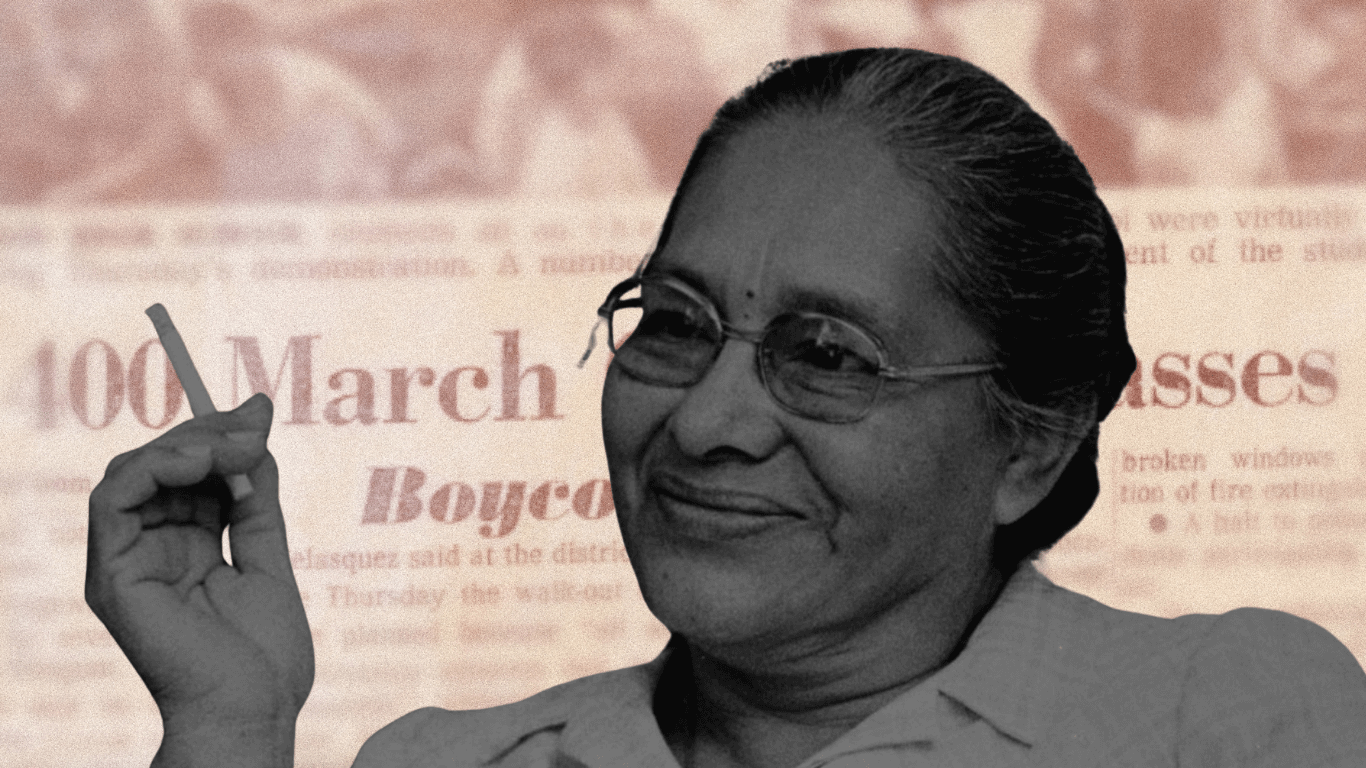
Mario Compean has been organizing on the Westside of San Antonio for most of his life. A proud Edgewood High School alum, he co-founded the Mexican American Youth Organization (MAYO) back in 1967 while he was a student at St. Mary’s University. Just a year later, he was one of the key organizers behind the student walkouts at Edgewood and Lanier High Schools—moments that would spark a much larger movement.
Compean didn’t stop there. He went on to help start La Raza Unida Party, becoming one of its most recognized leaders and even running for Texas governor in 1978. His campaign centered on equity, education, and giving communities more control over the decisions that affected their lives.
One of his biggest impacts? Helping win single-member districts in San Antonio. This opened the door for more communities of color to have a real voice in city politics. Throughout it all, Compean has stayed focused on what matters: organizing alongside others, mentoring young people, and building up the next generation of leaders through efforts like Academia América.

Manuel Garza has been organizing for justice in San Antonio since he was five years old. That’s when he first started helping his mom gather petitions to get basic services—like running water—for their Westside neighborhood. His family roots in Texas go all the way back to the 1500s, and so does his deep sense of place and purpose.
As a student at Edgewood High School, Garza joined the 1968 student walkout calling for fair funding and better opportunities. That early act of courage led him into a lifetime of activism through groups like the Mexican American Youth Organization (MAYO) and La Raza Unida Party.
Garza has played a big role in shaping San Antonio politics, especially through his work on the campaign to bring single-member districts to City Council—giving communities of color a stronger voice. He’s also served on the Edgewood ISD school board and Alamo Colleges District Westside Education & Training Center.
Today, he’s a senior advisor and field director at the Southwest Voter Registration Education Project (SVREP), helping register, educate, and mobilize Latino voters across the country. Whether mentoring young leaders or walking neighborhoods to get out the vote, Garza has never stopped fighting for a more just and representative democracy.

Rosendo “Ted” Gutierrez Jr. never forgot where he came from. A proud graduate of Edgewood High School, Gutierrez was part of the student council and helped organize the 1968 student walkout—standing up for better schools and fairer funding. That moment of student activism would go on to spark national conversations about education and equity, and it shaped the path he walked for the rest of his life.
After graduating that same year, Gutierrez joined the U.S. Army and went on to serve his country with distinction, eventually retiring as a Lieutenant Colonel. When he returned to civilian life, he became a physical therapist, carrying his commitment to care and service into a new chapter.
Gutierrez stayed deeply connected to the Westside community that raised him. Through the Edgewood District Veterans group, he organized back-to-school drives and raised more than $13,000 in scholarships for Edgewood students—always finding ways to give back and lift others up.
He passed away on February 1, 2025, after a brave battle with cancer. Gutierrez is remembered not just for his military honors or professional achievements, but for his steady leadership, generosity, and lifelong dedication to service in his neighborhood, his country, and beyond.

Diana Herrera knew early on that she wanted to be a teacher—and she never let anyone tell her otherwise. A proud graduate of Edgewood High School’s Class of 1969, Diana grew up at a time when young women, especially from the Westside, were often expected to stay close to home and raise families. But she had other plans. With determination and heart, she pushed past those expectations, earned her degree, and became the kind of educator who would go on to inspire generations.
As a student, Diana lived through the 1968 Edgewood Walkout—a moment that opened her eyes to the deep inequities in public education. She remembers the outdated books, overcrowded classrooms, and broken-down buildings at Edgewood, while newer schools just miles away had air conditioning and brand-new furniture. The walkout was more than a protest—it was a wake-up call. It showed her that students had a voice and that change was possible when they used it.
Diana went on to teach across the Westside, not just as an educator, but as a mentor and advocate. She led professional development for fellow teachers, always pushing for equity in the classroom and encouraging others to believe in their own potential.
Today, Diana remains a steady presence in her community—still passionate about public education and still reflecting on the lessons from that pivotal time. Her story is one of courage, conviction, and the belief that every child deserves a fair shot, no matter their ZIP code.

Richard Herrera has always believed in standing up for what’s right—even when it wasn’t easy. A proud member of Edgewood High School’s Class of 1969, Richard was part of the historic 1968 student walkout that demanded better conditions and equal treatment for Westside students. That experience shaped the course of his life.
Richard grew up in a close-knit Westside neighborhood where school, community, and identity were deeply connected. It was at Edgewood where he met his future wife, Diana, someone who shared his commitment to justice and love for their community.
Though he didn’t take a traditional academic path, Richard always trusted in his own potential. He had a natural gift for building relationships and connecting with people, whether at work, in the neighborhood, or behind the DJ booth. He spent years working at Southwestern Bell, proudly serving as a union member and eventually becoming a striker—always ready to fight for fairness and workers’ rights.
The 1968 walkout was a turning point. Richard still remembers the broken windows, the freezing classrooms, the lack of books and basic supplies. When students were called to walk out, he didn’t hesitate. He helped lead one of the largest student protests in Texas history, demanding the dignity and resources that every student deserves.
Today, Richard is still rooted in the Westside and proud of the role he played in a movement that sparked real change. His story is a reminder that speaking up—especially when you’re young—can echo for generations.

Al Kauffman has spent his life fighting for fairness—especially in Texas classrooms. As a senior attorney with the Mexican American Legal Defense and Educational Fund (MALDEF), Al was one of the key legal minds behind Edgewood ISD v. Kirby—a landmark case that challenged the way Texas funds its public schools.
In the late 1980s, Kauffman and a team of dedicated attorneys stood alongside families from San Antonio’s Westside to argue that the state’s school funding system—based on local property taxes—was deeply unfair. Wealthy districts had more resources, while schools in low-income neighborhoods like Edgewood were left with less. The case went all the way to the Texas Supreme Court and helped spark major reforms in school finance.
But Kauffman’s work didn’t stop there. Over the years, he’s taken on civil rights cases focused on voting rights, immigration, and education—all grounded in the belief that the law can and should serve the people. He’s also spent time in the classroom, teaching at St. Mary’s University School of Law and mentoring young advocates who want to make a difference.
Through it all, Al Kauffman has stayed committed to justice and to the communities whose voices too often go unheard. His legacy is felt in every push for a more equitable school system—and in every student who now has a better chance because of it.

Demetrio Rodríguez didn’t set out to make history—he just wanted something better for his kids. A proud parent in Edgewood ISD and lifelong Westside San Antonian, Rodriguez saw firsthand how unequal the public school system was. In 1968, when students walked out in protest, he stood right beside them. Along with Alberta Zepeda Snid, he helped form the Edgewood District Concerned Parents Association to demand change.
After the walkout, Rodriguez became the lead plaintiff in San Antonio Independent School District v. Rodriguez a lawsuit that challenged how Texas funded its public schools. The case made it all the way to the U.S. Supreme Court. Though the 1973 ruling didn’t go their way, Rodriguez didn’t give up. More than a decade later, he joined the Edgewood Independent School District v. Kirby case, which led to major school finance reforms across Texas—including the “Robin Hood” plan.
A Navy veteran and sheet-metal worker at Kelly Air Force Base, Rodriguez wasn’t a lawyer or politician. He was a father who had experienced discrimination and refused to accept it for the next generation. Known for his quiet strength, he spent years in legal battles—not for recognition, but so that all Texas children could have a fair shot at a good education.
Rodriguez passed away in 2013 at the age of 87. His legacy lives on through the movement he helped spark and the family he inspired—especially his daughter, who calls him “my hero.”

Herlinda Sifuentes has always believed in the power of young people—and she’s spent her life helping them believe in themselves. Born and raised on the Westside of San Antonio, Sifuentes is a proud graduate of Edgewood High School and was a senior during the 1968 walkout. That moment was more than a protest—it was a turning point that showed her and her classmates they didn’t have to stay silent in the face of injustice.
Growing up in a big family with hardworking parents, Sifuentes saw early on how much education mattered—and how many barriers stood in the way for students in her neighborhood. The walkout lit a fire in her that never went out.
After graduation, Sifuentes turned that spark into action. She’s dedicated her career to helping young people navigate the same kinds of challenges she once faced. Through her work with HISPA (Hispanics Inspiring Students’ Performance and Achievement), she mentors, encourages, and uplifts students across San Antonio.
Her story is one of heart and purpose. She’s a living reminder that change comes from people who show up, speak out, and make sure the next generation knows they matter.

Alberta Zepeda Snid spent her life fighting for dignity—at work, in schools, and in her community. Born in 1919 to a migrant-worker family, Snid grew up moving between the Rio Grande Valley and Michigan, picking cotton and shelling pecans alongside her relatives. She knew hardship from a young age—but she also knew the power of standing up for what’s right.
In 1938, Snid joined one of the largest labor strikes in the Southwest: the historic Pecan Shellers Strike in San Antonio. She and thousands of others demanded fair wages, safer conditions, and recognition for their work—laying the groundwork for future labor and civil rights movements in the city.
Three decades later, when students at Edgewood High School walked out in 1968 to protest poor school conditions and inequitable funding, Snid stood with them. She started the parents’ group, Edgewood Concerned Parents Association, that helped launch the San Antonio Independent School District v. Rodriguez lawsuit—a case that challenged how public schools were funded across Texas and the nation.
Snid continued her work through the Mexican American Unity Council, focusing on education, women’s rights, and labor justice. She never stopped pushing for change, and her story connects generations—from the picket lines of the 1930s to the classrooms of the 1960s.
Her legacy lives on in every fight for equity, every student who dares to speak up, and every community that chooses to organize for something better